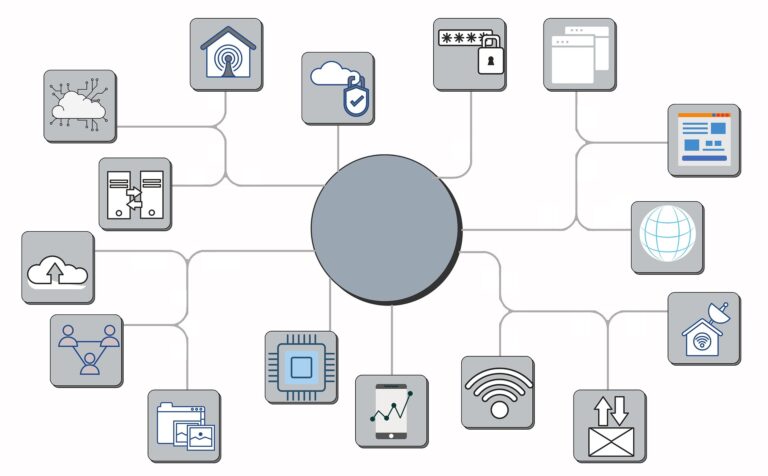What are the features of an e-commerce website?
What does it entail to build a successful e-commerce website?
It takes a multidimensional strategy that includes design, functionality, user experience, marketing, and other elements to create a successful e-commerce website. We will examine the essential components of an e-commerce website’s performance in this article, emphasizing the vital elements that can support the expansion and financial success of the site.
Key success features of e-commerce website
Table of Contents
User-Friendly Design
User-friendliness is top on the list of key features of e-commerce website because users form an opinion of an e-commerce website based on its design first. It ought to be responsive, clear, and easy to use. In order to draw in and keep visitors, a website must have a clear and organized structure, simple navigation, and an appealing design.
Mobile Responsiveness
It’s critical to make sure your e-commerce website is mobile-friendly given the rise in popularity of smartphones. Regardless of the device a consumer uses, responsive design guarantees a flawless experience.
Fast Loading Speed
Websites with a slow loading speed discourage users. Make sure your website loads quickly. This will boost both user experience and search engine rankings.
Secure Checkout
When it comes to e-commerce website, security is crucial. Provide a variety of safe payment alternatives to foster trust and utilize strong SSL encryption to safeguard customer information during transactions.
High-Quality Product Images
Visual appeal is important in e-commerce website. To highlight products, use high-resolution pictures taken from various perspectives. Customers can examine products up close with the use of zoom and 360-degree view features.
Detailed Product Descriptions
Customers may make more informed judgments when they have access to thorough product descriptions that include features, benefits, and specifications. Emphasize your main selling elements and, if necessary, provide sizing guidelines.
Customer/User Reviews and Ratings
Customers should be encouraged to rate and review products. While negative criticism offers suggestions for improvement, positive feedback fosters trust.
Robust Search and Filter Functions
Good search and filter functions facilitate speedy product discovery for clients. Include functions such as autocomplete, predictive search, and filters according to brand, price, category, and other criteria.
Shopping Cart Features
It is imperative to have a shopping cart that is easy to use, with clear product descriptions, adjustable quantity, and a simple checkout process. For returning users, the cart contents ought to be saved as well.
Payment Options
To reach a wider range of customers, provide a range of payment alternatives, such as digital wallets, credit cards, and other payment methods.
Shipping and Delivery Information
It’s crucial to provide clear shipping prices, delivery schedules, and tracking capabilities. Give precise details regarding delivery regulations and available options, such as expedited or free shipment for certain thresholds.
Return and Refund Policies
Make sure that your return and refund procedures are understood. Make it simple for clients to request swaps or returns, and make sure that they are handled quickly.
Customer Support
Provide multiple avenues for communication, such as phone, email, and live chat. Being responsive is essential because prompt and helpful customer care can convert prospective problems into happy clients.
Personalization
Make product recommendations using data-driven personalization based on user behavior, preferences, and past purchases. Cross-selling opportunities are increased and the shopping experience is improved as a result.
Security
Invest in strong security protocols to safeguard client information. Update your software frequently, do security audits, and train your staff on the latest security procedures.
Search Engine Optimization (SEO)
Use SEO best practices to raise your company’s profile in search engine rankings. Build high-quality backlinks, provide high-quality content, and optimize product pages with pertinent keywords.
Social Media Integration
Link your online store to social media networks. Distribute goods, carry out social media marketing initiatives, and support user-generated content.
Email Marketing
Create and manage an email list to alert clients about sales, new items, and other information. Customize email content to increase sales and engagement.
Analytics and Reporting
Track sales, keep an eye on user activity, and pinpoint areas that need work with analytics tools. Insights derived from data facilitate improved decision-making.
Scalability
As your company expands, be sure your e-commerce platform can develop to meet the additional demand and traffic.
Cross-Browser Compatibility
To guarantee that every user has a consistent experience, test your website’s compatibility with different web browsers.
Content Management System
For easy content management and updating, use a versatile and user-friendly content management system (CMS).
Multi-Language and Multi-Currency Support
To reach a worldwide audience, support a variety of languages and currencies if you intend to grow abroad.
A/B Testing
Run A/B tests on your e-commerce website to continuously enhance its performance and identify the factors that convert visitors into buyers.
Feedback Mechanisms
Invite customers to share their opinions about their buying experiences. Examine comments to find areas that need improvement.
Sustainability Initiatives
Taking environmental issues seriously can make you stand out. Reduce carbon footprint, use eco-friendly packaging, and promote sustainability initiatives.
Marketing and Advertising
To increase visitors and conversions, spend money on a variety of marketing channels, such as social media campaigns, content marketing, and paid advertising.
Community Building
Use user-generated content, forums, and social media to build a community around your brand. Engage clients in ways that go beyond purchases.
Trust Badges and Certifications (Credentials)
Showcase industry qualifications, SSL certificates, and trust badges to reassure visitors that your website is dependable and secure.
Legal Compliance
Make sure your online store conforms with consumer rights, tax rules, and data protection legislation in the areas you serve.
Continuous Improvement
Success in e-commerce is a continuous process. Keep an eye on user feedback and market trends as you continuously evaluate and enhance your website.
Conclusion
In summary, developing a profitable e-commerce website is a dynamic process involving a wide range of elements and tactics. Every element—from marketing and customer service to the layout and usability of the website—is vital to drawing in, keeping, and delighting customers. Long-term success in the fiercely competitive world of e-commerce requires the ability to adjust to shifting consumer tastes and technology developments.



